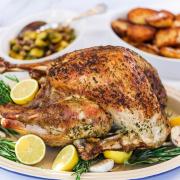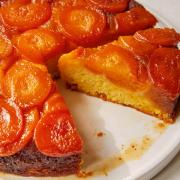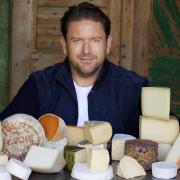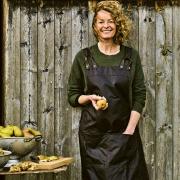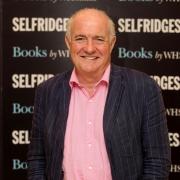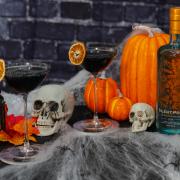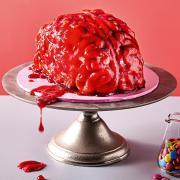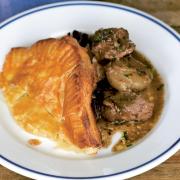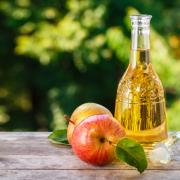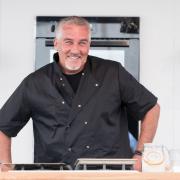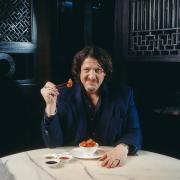In his latest cookbook, Cooking and the Crown, Tom Parker Bowles details the history of food within the royal family – from the reign of Queen Victoria beginning in 1837 and Edward VII at the turn of the century, to Charles and Camilla.
“They can certainly eat that family!” says Parker Bowles – who regularly appears as a critic on BBC One’s MasterChef. “In the old days, they were the very pinnacle of society and what was known about them, I suppose, was pretty controlled. So it wasn’t just what they ate [that the public were fascinated by] it was what they wore, who they saw, what they read, if the King and Queen were doing this, it meant it was something perhaps worth doing.”
Lunch and dinner, in Queen Victoria’s time, would be 10 to 12 courses, he says. “They didn’t have to eat it all but there was just a huge amount of food and they did eat a lot more than we do now.”
Unlike aristocratic breakfasts of Victorian and Edwardian times – where the spreads were “full-on gastronomic assaults. Gut-busting epics that set one up for a good old fashioned day’s hunting, shooting and roistering”, as Parker Bowles writes – the current reigning royalty eat much more simply, and healthily in the morning. “Tastes have changed.”
Afternoon tea has always been a spectacle – and an important, and substantial meal in itself – for the royals (although Parker Bowles insists he’s never been invited for tea at Buckingham Palace).

“Food at the very top of the social strata is a mixture of very French and very high-end, Escoffier cuisine, with all sorts of truffles and cream and butter.”
It’s no surprise then that traditionally – and still to this day – royal menus are written in French. “The late Queen was absolutely fluent in French and if [Flanagan] sent down the menu with one accident in the wrong place, it would be marked.
“She was amazing, the late Queen in many ways, but especially with state banquets, she never forgot if a certain somebody liked one dish – she would always add it on [to the menu] as a nod. She really remembered everything. The menus were very much written for the people at the state banquet.”

Tom Parker Bowles’ fresh pappardelle with porcini recipe
A dish inspired by the King and Queen’s love of mushrooms.
“Wild mushrooms are somewhat of an obsession, with Charles III and Queen Camilla deeply competitive about their hauls,” says Tom Parker Bowles.
“In the late summer, porcinis (also known as penny buns or ceps) are particularly abundant in Scotland, as are the apricot-scented chanterelles, birch bolete and wood hedgehog.
“The wild harvest is either cooked fresh, preserved in butter or dried for use throughout the year.”
Ingredients
(Serves 4)
400g pappardelle pasta
A big lump of butter
A big glug of olive oil
600g porcini (cep) mushrooms, sliced vertically
1 garlic clove, finely chopped
Glass of white wine
A handful of chopped flat-leaf parsley
Salt and freshly ground black pepper
A big handful of grated Parmesan, to serve
Method
1. Cook the pasta in plenty of salted water according to the package instructions.
2. Meanwhile, heat the butter and oil in a large frying pan over a high heat. When hot, add the mushrooms and cook for five minutes until all the water has evaporated.
3. Reduce the heat and add the garlic, cooking for a few minutes, then whack the heat back up and deglaze the pan with the wine. Let it evaporate, then add salt and pepper to taste, parsley and a teaspoonful of the pasta cooking water.
4. Drain the pasta and add to the sauce in the pan, mixing well. Serve with the grated Parmesan.

Queen Mary’s birthday cake recipe
This is a recipe from Gabriel Tschumi, who served as chef to three British monarchs: Queen Victoria and Kings Edward VII and George V.
“The famed cake was also served each year at Queen Mary’s birthday,” says food writer and critic Tom Parker Bowles – and the recipe has proved popular throughout the years.
“This one was served to a young Prince Richard (now Duke of Gloucester) during the 1951 visit,” he adds. “Among her observations, the Queen had heavily underlined the chocolate cake, written Prince Richard’s name and the words ‘great success’.”
Queen Mary’s birthday cake
Ingredients
125g melted butter, plus extra for greasing
8 egg yolks
2 egg whites
200g golden caster sugar
200g self-raising flour, plus extra for dusting
For the chocolate ganache:
600ml double cream
100g caster sugar
450g good-quality dark chocolate, grated
You will need:
Two 20cm round cake tins
Method
1. Preheat the oven to 180°C/350°F/gas mark 4. Grease and flour the cake tins.
2. Whip the eggs and sugar in a bain marie (a heatproof bowl set over a pan of simmering water – do not let the base of the bowl touch the water) until thick and you reach the ribbon stage (the beaters when lifted will leave a ribbon trail of batter).
3. Sift in the flour in three stages, gently folding in each time, then add the melted butter and fold in until incorporated.
4. Pour the batter into the prepared cake tins and bake in the oven for 30 minutes, or until an inserted skewer comes out clean. Remove from the oven to a wire rack to cool in the tins, then remove from the tins to cool completely.
5. For the ganache, combine the cream, sugar and chocolate in a heavy saucepan and bring to the boil, then leave for one hour to cool.
6. Cut each cake in half and spread each layer with ganache, building up to a four-layer sandwich. Coat the entire surface of the cake with the remaining ganache.

The Queen Mother’s gin and Dubonnet cocktail recipe
“Despite the vast and magnificently stocked cellars at both Windsor Castle and Buckingham Palace, the monarchs, from Queen Victoria to King Charles III, were not (and are not) great drinkers,” writes Tom Parker Bowles, saying that it would be the occasional glass, rather than endless bottles.
“And while the Queen Mother is affectionately remembered for liking the odd tipple – you’d certainly never go thirsty at one of her splendid lunches – it was more about being a generous host.”
A gin and Dubonnet cocktail was much appreciated by the late Queen and Queen Mother alike, though, typically sipped before lunch.
“It has a stirring mixture of sweet, bitter and vaguely herbal flavours. And certainly puts a spring in one’s step,” he says.
The Queen Mother’s gin and Dubonnet cocktail
Ingredients
(Makes 1)
2 parts Dubonnet
1 part gin
4 cubes of good ice
A slice of lemon
Method
1. Pour the booze into a tumbler with the ice and mix well.
2. Garnish with the lemon slice




